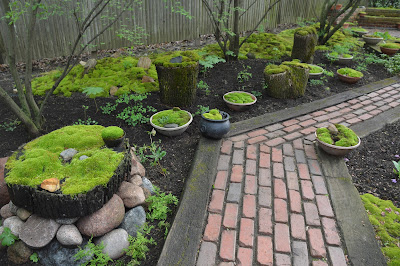Time for the annuals
On Sunday, I finally felt it was safe to plant the begonias and impatiens. I usually wait until May 22nd to plant, assuming the next week looks free of frost. So, on Saturday I spent three hours preparing all the planting beds, turning over the soil (that had an inch of compost added) and working in some slow-release fertilizer.I plant 21 flats of annuals, and I completed all but two on Sunday. Most go into beds, but I also have about 50 hanging baskets and containers. In the beds, I can plant about five flats an hour, four at the minimum. That might sound fast, but that has been my rate for the last thirty years. I have a very intense feeling when planting, driving me to be as fast as I can, probably because I know that a thousand plants is a lot of work. Most of my annuals are begonias, with only two flats of impatiens. I used to plant more impatiens, but the downy mildew fungus hit here about five years ago, devastating the flowers by mid-August. Last year I did not see evidence of it, so I am trying a couple of flats to see what happens.
The photos show the planting in the patio area. The empty trays show the work of Sunday. The last photos show the same location last year. With luck, it won't freeze, leading to similar results.


































